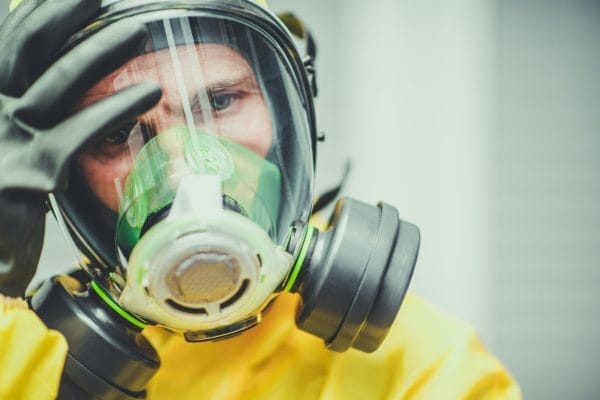Infectious Diseases: How Germs Can Cause Illness and Spread
Infectious diseases are disorders caused by organisms such as bacteria, viruses, fungi, or parasites. Many of these organisms live in and on our bodies and are normally harmless or even helpful. However, under certain conditions, some can cause diseases. Infectious diseases can be mild, moderate, or severe and can spread from one person to another, through insect or animal bites, or by consuming contaminated food or water.

Infectious Disease Definition
![]()
When we talk about an infectious disease, we refer to a condition caused by pathogenic microorganisms that invade tissue and cause harm. These microorganisms, known as pathogens, can spread directly or indirectly from one person to another. Infectious diseases are a major cause of illness and death worldwide, particularly in regions with limited access to healthcare and sanitation.
What Are Infectious Diseases?
![]()
Infectious diseases range from common illnesses like the flu to more severe conditions such as HIV/AIDS. They are characterized by symptoms that result from the body’s attempt to fight off the invading pathogen. These symptoms can include fever, chills, muscle aches, coughing, and sneezing, among others. The severity and duration of an infectious disease depend on the type of pathogen, the individual’s immune system, and whether or not treatment is administered.
Infectious Diseases Examples
![]()
There are countless examples of infectious diseases. Some of the most well-known include:
- The common cold, primarily caused by rhinoviruses
- Influenza (the flu), caused by the influenza virus
- Tuberculosis (TB), caused by the bacterium Mycobacterium tuberculosis
- HIV/AIDS, caused by the human immunodeficiency virus (HIV)
- Malaria, caused by Plasmodium parasites transmitted by mosquitoes
- COVID-19, caused by the novel coronavirus SARS-CoV-2
Each of these diseases has its own mode of transmission, symptoms, and treatments. Understanding these factors is crucial for prevention and control.
List of Infectious Diseases
![]()
While it’s impossible to list every infectious disease, here are some of the most significant ones that have impacted human health:
- Respiratory infections, such as pneumonia and tuberculosis
- Diarrheal diseases, such as cholera and salmonella
- Vector-borne diseases, such as malaria and dengue fever
- Sexually transmitted infections (STIs), like HIV/AIDS and syphilis
- Vaccine-preventable diseases, such as measles, mumps, and rubella
- Zoonotic diseases, which are transmitted from animals to humans, like rabies and Lyme disease
- Prion diseases, which are rare and affect the brain, such as Creutzfeldt-Jakob disease
Each category includes numerous specific diseases, reflecting the vast diversity of pathogens and the ways they can affect the human body.
Transmission of Infectious Diseases
![]()
Infectious diseases can be transmitted through various pathways. Some of the most common modes of transmission include:
- Person-to-person contact: Direct physical contact, such as touching or kissing, can spread diseases like the common cold and herpes.
- Respiratory droplets: Coughing and sneezing can release droplets that carry pathogens like the flu virus.
- Blood or bodily fluids: Diseases like HIV and hepatitis are spread through sharing needles or unprotected sex.
- Contaminated water or food: E. coli and salmonella infections can result from consuming unsafe food or water.
- Insects and animals: Bites from infected mosquitos, ticks, or other animals can transmit diseases such as malaria or Lyme disease.
Understanding how infectious diseases are transmitted is essential for developing public health strategies to prevent and control outbreaks.
Prevention and Control
![]()
Preventing infectious diseases and controlling their spread requires a multi-faceted approach. Measures include:
- Vaccination: Immunizations can prevent many infectious diseases, like measles and hepatitis B.
- Sanitation and hygiene: Proper handwashing, safe food handling, and clean water sources are critical to reducing disease transmission.
- Safe sex practices: Using condoms and getting tested regularly can help prevent the spread of sexually transmitted infections.
- Vector control: Eliminating the habitats of disease-carrying insects, like mosquitoes, can reduce the incidence of vector-borne diseases.
- Public health measures: Quarantine, isolation, and travel restrictions are sometimes necessary to control the spread of highly infectious diseases.
By combining these strategies, communities can significantly reduce the burden of infectious diseases.
Impact of Infectious Diseases on Society
![]()
The impact of infectious diseases on society is profound. They can cause widespread morbidity and mortality, overwhelm healthcare systems, and lead to significant economic losses. Outbreaks can also affect international travel and trade, education, and other sectors. The COVID-19 pandemic is a stark reminder of how an infectious disease can rapidly become a global crisis, affecting millions of lives and economies around the world.
Case Studies and Statistics
![]()
Here are some notable case studies and statistics that highlight the significance of infectious diseases:
- The HIV/AIDS epidemic: Since the 1980s, HIV/AIDS has claimed more than 32 million lives, with nearly 38 million people living with the virus as of 2019.
- The 1918 Flu Pandemic: Often referred to as the “Spanish flu,” this pandemic infected about one-third of the world’s population and caused an estimated 50 million deaths.
- The Ebola outbreak of 2014-2016: This outbreak primarily affected West Africa, with over 28,000 cases and 11,000 deaths, highlighting the need for rapid response and international cooperation.
- COVID-19 pandemic: As of early 2023, COVID-19 has resulted in millions of deaths worldwide, demonstrating the speed at which a new infectious disease can spread globally.
These examples underscore the importance of ongoing research, surveillance, and preparedness in the fight against infectious diseases.
Frequently Asked Questions
![]()
What is an infectious disease?
An infectious disease is a disorder caused by organisms such as bacteria, viruses, fungi, or parasites. Many of these organisms are normally harmless, and they can even live on or in your body, but under certain conditions, some can cause disease.
How do infectious diseases spread?
There are several ways infectious diseases can spread:
- Person-to-person contact (like shaking hands or touching)
- Through bites from insects or animals (like mosquitoes or ticks)
- Eating contaminated food or drinking contaminated water
- Breathing in airborne viruses or bacteria
- Through bodily fluids like blood or saliva, often by sexual contact
Can vaccines prevent infectious diseases?
Yes, vaccines can prevent many infectious diseases. Vaccines work by stimulating your immune system to produce antibodies, which are like special defenders against specific infections, without causing the disease itself.
What are the signs of an infectious disease?
Signs of an infectious disease can vary but often include fever, fatigue, muscle aches, coughing, and diarrhea. The symptoms depend on the type of organism causing the infection, the part of the body affected, and the person’s overall health.
When should I see a doctor for an infectious disease?
You should see a doctor if you have persistent symptoms that don’t improve over a few days, such as high fever, severe headache, rash, or significant fatigue. If you have trouble breathing, persistent pain or pressure in the chest, new confusion, or bluish lips or face, seek medical attention immediately.
How are infectious diseases diagnosed?
Doctors diagnose infectious diseases based on your symptoms, medical history, and often through various tests. These tests might include blood tests, urine tests, throat swabs, stool samples, or imaging tests like X-rays or CT scans.
Can antibiotics cure all infectious diseases?
No, antibiotics only work against bacterial infections. They do not work against viral infections like the flu or the common cold. Using antibiotics when they’re not needed can lead to antibiotic resistance, which makes it harder to treat bacterial infections.
How important is handwashing in preventing infectious diseases?
Handwashing is one of the most effective ways to prevent the spread of many types of infectious diseases. Proper handwashing with soap and water can remove germs and reduce the likelihood of spreading infections to others.
What is the difference between an epidemic and a pandemic?
An epidemic occurs when an infectious disease spreads rapidly to many people within a community, region, or population. A pandemic is an epidemic that has spread over multiple countries or continents, usually affecting a large number of people.
How can I protect myself from infectious diseases while traveling?
To protect yourself while traveling:
- Make sure you are up to date with vaccinations.
- Avoid eating or drinking anything that might be contaminated.
- Use mosquito repellent and wear long-sleeved clothing to prevent bites.
- Practice good hygiene, like washing your hands regularly.
- Follow travel advisories and understand the risks of the areas you are visiting.
Conclusion
![]()
Infectious diseases are a persistent threat to human health. Understanding the infectious disease definition, recognizing what are infectious diseases, and being aware of infectious diseases examples, including a comprehensive list of infectious diseases, is crucial for prevention and treatment.
Society must continue to invest in healthcare infrastructure, research, and public health initiatives to mitigate the impact of these diseases. By staying informed and taking appropriate preventive measures, individuals can protect themselves and their communities from the spread of infectious diseases.

